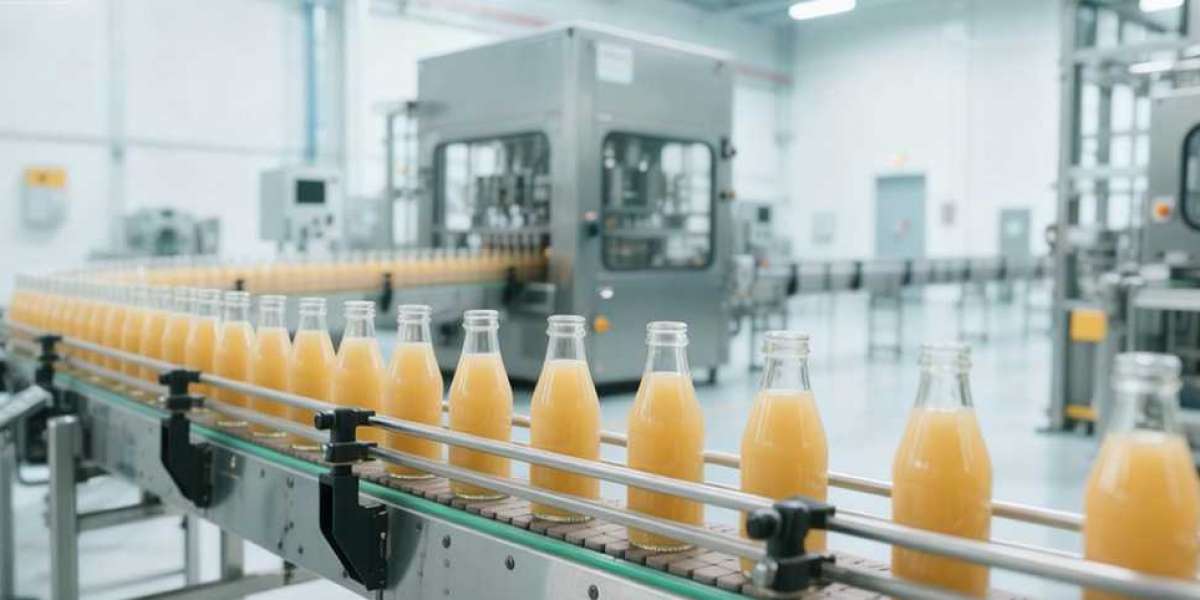Cold-pressed juice is beloved for its fresh, nutrient-rich texture—but its high pulp, fiber, and fruit particle content make it a nightmare for filling lines. Clogs in your juice filling machine stop production in its tracks: they waste precious juice (which spoils fast), force your team to pause and clean, and miss delivery deadlines. The good news? Most clogs don’t need hours to fix—you just need the right tools, quick steps, and a juice filling machine manufacturer that designs equipment for cold-pressed juice’s unique needs. Below, we’ll break down how to resolve clogs fast and prevent them from coming back.
First: Identify Where Clogs Happen (Most Are in 2 Spots)
Before fixing a clog, you need to find it. In cold-pressed juice production, clogs almost always form in two key parts of a juice filling machine:
- Filling nozzles: The narrow opening of nozzles traps pulp and small fruit bits (e.g., berry seeds or apple fiber).
- Feed pipes: Juice flows from the storage tank to the nozzles through these pipes—thick pulp can build up here and block flow.
You’ll know there’s a clog if:
- Juice drips slowly (or not at all) from nozzles.
- The machine makes unusual noises (like gurgling) from blocked pipes.
- Some bottles are underfilled (juice can’t reach them due to a blockage).
Once you spot these signs, act fast—cold-pressed juice spoils quickly, so long downtime means more waste.
Quick Fixes: Resolve Clogs in 5–10 Minutes
You don’t need fancy tools to clear most clogs. Use these step-by-step solutions for each common clog spot:
For Clogged Filling Nozzles
Nozzles are the easiest to fix—follow these steps:
- Pause the machine and turn off juice flow: This stops more juice from pushing into the clog (which makes it worse).
- Remove the nozzle (if it’s detachable): Most modern juice filling machineshave nozzles that twist off by hand (no tools needed).
- Flush with warm water: Hold the nozzle under running warm water (not hot—hot water can cook pulp and make clogs harder to remove). Use a small, soft brush (like a toothbrush) to gently scrub inside the nozzle if pulp is stuck.
- Reattach and test: Put the nozzle back on, turn on juice flow, and run a test fill. If juice flows smoothly, the clog is gone.
This process takes 5 minutes max—and avoids disassembling the entire machine.
For Clogged Feed Pipes
Pipes need a slightly different approach (but still fast):
- Use the machine’s built-in backflush feature: Many juice filling machines(especially those for cold-pressed juice) have a “backflush” button. This reverses water flow through the pipes to push out pulp clogs. Just press the button and let it run for 1–2 minutes—most clogs clear instantly.
- If no backflush: Disconnect the pipe from the tank (follow the machine’s manual to avoid leaks), then pour warm water through it from both ends. Use a long, flexible brush (made for food equipment) to push out any remaining pulp.
- Reconnect and test: Reattach the pipe, turn on juice flow, and check if the machine works normally.
Prevent Clogs from Coming Back (Long-Term Solutions)
Fixing clogs fast is great—but preventing them saves even more time. Use these steps to keep your juice filling machine clog-free:
Step 1: Choose a Juice Filling Machine with Cold-Pressed-Specific Features
Not all machines are built for pulp-heavy juice. Look for these design traits:
- Wide-bore nozzles: Nozzles with a diameter of 10mm or more (wider than standard nozzles) let pulp pass through without getting stuck.
- Smooth internal pipes: Pipes with no ridges or seams prevent pulp from building up (rough surfaces trap fiber over time).
- Built-in CIP (Clean-in-Place) systems: These automatically flush nozzles and pipes with warm water after every batch—no manual cleaning needed.
A cold-pressed juice brand that switched to a machine with wide nozzles and CIP cut clog frequency by 80%—from 3 clogs a day to just 1 every 2 days.
Step 2: Pre-Treat Juice Before Filling
You can reduce pulp buildup by prepping juice before it enters the machine:
- Strain with a fine mesh sieve: For extra-pulpy juices (like kale-apple or berry), strain once before pouring into the machine’s tank. This removes large bits that cause clogs.
- Don’t overfill the tank: Too much juice in the tank creates extra pressure, pushing pulp into nozzles and pipes faster. Fill the tank to 70–80% capacity instead of full.
Step 3: Clean Daily (Even If There Are No Clogs)
Daily cleaning keeps small pulp bits from turning into big clogs:
- After each shift, run the CIP system (if you have one) for 5 minutes.
- Wipe down nozzles with a damp cloth to remove surface pulp.
- For machines without CIP, soak nozzles and pipes in warm, soapy water overnight (avoid harsh chemicals—they can damage parts).
How a Trusted Juice Filling Machine Manufacturer Helps
A great juice filling machine manufacturer doesn’t just sell you a machine—they help you avoid clogs in the first place. Look for manufacturers that:
- Specialize in cold-pressed juice equipment: They understand pulp and fiber risks (unlike manufacturers of generic juice machines).
- Offer custom parts: If your juice is extra thick (e.g., mango-coconut cold-pressed), they can make wider nozzles or larger pipes to fit your needs.
- Provide training: They teach your team how to spot early clogs, use backflush/CIP features, and clean parts properly—so your team resolves clogs fast on their own.
- Supply fast replacement parts: If a nozzle or pipe gets damaged from frequent clogs, they ship new parts in 3–5 days (no long downtime waiting for repairs).
Clogs in cold-pressed juice production don’t have to stop your line for hours. By knowing where clogs form, using quick fixes (warm water flushes, backflush), and preventing them with the right juice filling machine and daily cleaning, you’ll keep production smooth. And partnering with a juice filling machine manufacturer that understands cold-pressed juice ensures you have equipment built to handle pulp—no more unexpected clogs.
Remember: Cold-pressed juice’s freshness is its biggest selling point. Fast clog resolution means less wasted juice, happier customers, and more consistent production.








